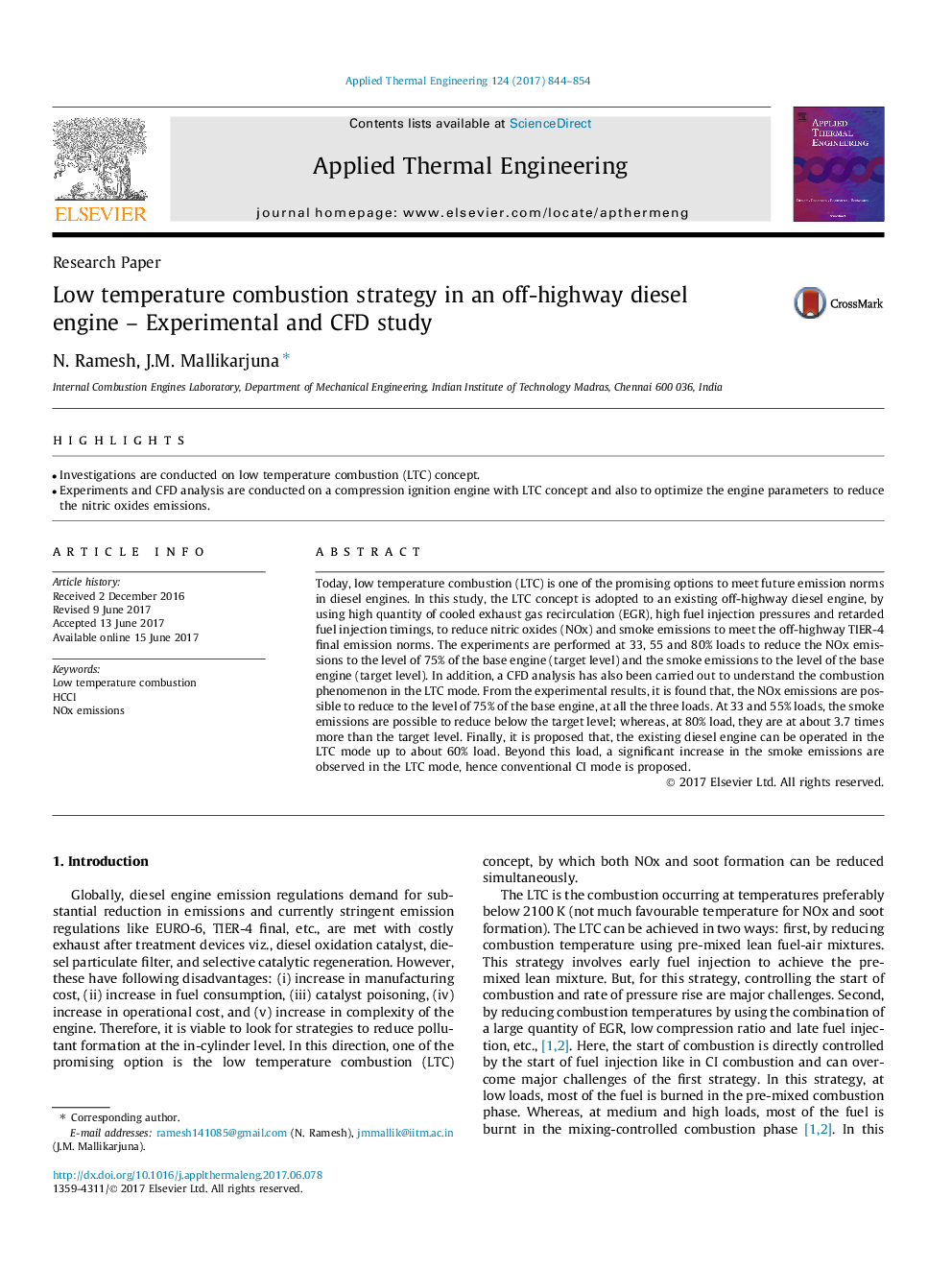| Article ID | Journal | Published Year | Pages | File Type |
|---|---|---|---|---|
| 4990668 | Applied Thermal Engineering | 2017 | 11 Pages |
â¢Investigations are conducted on low temperature combustion (LTC) concept.â¢Experiments and CFD analysis are conducted on a compression ignition engine with LTC concept and also to optimize the engine parameters to reduce the nitric oxides emissions.
Today, low temperature combustion (LTC) is one of the promising options to meet future emission norms in diesel engines. In this study, the LTC concept is adopted to an existing off-highway diesel engine, by using high quantity of cooled exhaust gas recirculation (EGR), high fuel injection pressures and retarded fuel injection timings, to reduce nitric oxides (NOx) and smoke emissions to meet the off-highway TIER-4 final emission norms. The experiments are performed at 33, 55 and 80% loads to reduce the NOx emissions to the level of 75% of the base engine (target level) and the smoke emissions to the level of the base engine (target level). In addition, a CFD analysis has also been carried out to understand the combustion phenomenon in the LTC mode. From the experimental results, it is found that, the NOx emissions are possible to reduce to the level of 75% of the base engine, at all the three loads. At 33 and 55% loads, the smoke emissions are possible to reduce below the target level; whereas, at 80% load, they are at about 3.7 times more than the target level. Finally, it is proposed that, the existing diesel engine can be operated in the LTC mode up to about 60% load. Beyond this load, a significant increase in the smoke emissions are observed in the LTC mode, hence conventional CI mode is proposed.
